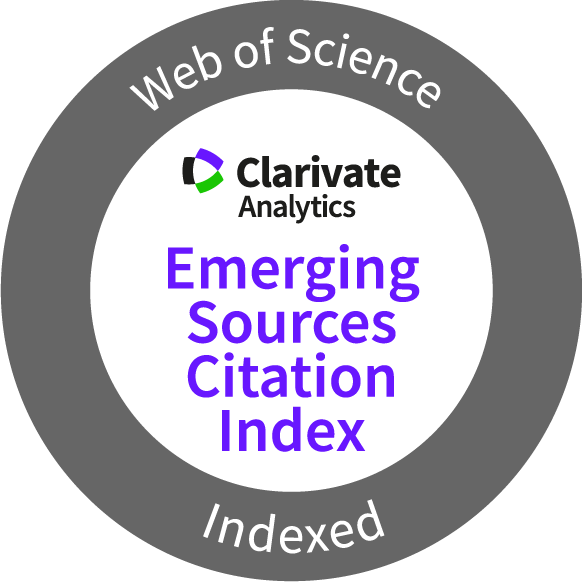Population Genetic Structure in the Invasive Ant Tapinoma indicum (Forel) (Hymenoptera: Formicidae) in Penang Island, Malaysia
Keywords:
Ants, nuisance pest, microsatellite markers, population geneticAbstract
Tapinoma indicum (Forel, 1895) (Hymenoptera: Formicidae) is a common household ant in Southeast Asia and has become increasingly dominant in urban environments on Penang Island, Malaysia. Its ability to establish persistent infestations indoors presents a growing concern. As its presence expands, understanding its genetic structure and dispersal patterns becomes increasingly important to uncover how it colonizes new areas and maintains high population densities. This study presents the first population genetic analysis of T. indicum using seven polymorphic microsatellite markers. A total of 300 individuals from 30 residential sites across three districts were analyzed to assess genetic diversity and population structure. All loci exhibited high polymorphism, with an average of 31 alleles per locus and high expected heterozygosity (mean HE = 0.926), indicating substantial genetic variation. However, observed heterozygosity was lower (mean HO = 0.437), and some loci showed signs of null alleles and inbreeding. F-statistics revealed moderate inbreeding within populations (mean FIS = 0.490) and low genetic differentiation between districts (FST = 0.075). Principal Coordinates Analysis and STRUCTURE results showed weak spatial genetic structuring and evidence of admixture, suggesting widespread gene flow. These findings indicate that T. indicum populations on Penang Island are genetically diverse but not strongly differentiated, forming a largely interconnected population across the island.
Downloads
Metrics
References
Ab Majid, A.H., Dieng, H., Ellias, S. & Ahmad, H. 2016. Tropical household ants species composition and distribution in rapid urbanization area in Penang, Malaysia. Journal of Entomology and Zoology Studies, 4: 496-500.
Ab Majid, A.H., Kamble, S. & Chen, H. 2018. Breeding patterns and population genetics of eastern subterranean termites Reticulitermes flavipes in urban environment of Nebraska, United States. Sociobiology, 65: 506. DOI: https://doi.org/10.13102/sociobiology.v65i3.2821
Blumenfeld, A., Eyer, P., Helms, A., Buczkowski, G. & Vargo, E. 2021. Consistent signatures of urban adaptation in a native, urban invader ant Tapinoma sessile. Molecular Ecology, 00: 1-19. DOI: https://doi.org/10.1101/2021.06.21.449338
Branstetter, M.G. 2013. Revision of the middle American clade of the ant genus Stenamma westwood (Hymenoptera, Formicidae, Myrmicinae). ZooKeys, 295: 1. DOI: https://doi.org/10.3897/zookeys.295.4905
Chong, K.F. & Lee, C.Y. 2006. Food preferences and foraging activity of field populations of a pest ant, Tapinoma indicum (Hymenoptera: Formicidae). Sociobiology, 48: 875-926.
Chong, K.F. & Lee, C.Y. 2009. Evaluation of liquid baits against field populations of the long-legged ant (Hymenoptera: Formicidae). Journal of Economic Entomology, 102: 1586-1590. DOI: https://doi.org/10.1603/029.102.0424
Destour, G., Kaufmann, B., Centanni, J., Abdelli, Z., Doums, C., Dumet, A. & Javal, M. 2024. Genetic tracing reveals the role of ornamental plant trade in the simultaneous spread of three invasive ant species in Western Europe.
Dlugosch, K.M. & Parker, I.M. 2008. Founding events in species invasions: Genetic variation, adaptive evolution, and the role of multiple introductions. Molecular Ecology, 17: 431-449. DOI: https://doi.org/10.1111/j.1365-294X.2007.03538.x
Forel, A. 1895. Les formicides de l'empire des indes et de ceylan. Part V. Journal of the Bombay Natural History Society, 9: 453-472.
Frankham, R. 2018. Conservation genetics. In: Encyclopedia of Ecology, B.D. Fath (Ed.). pp. 382-390. DOI: https://doi.org/10.1016/B978-0-12-409548-9.10559-7
Gibb, H., Dunn, R., Sanders, N., Grossman, B., Photakis, M., Abril, S., Agosti, D., Andersen, A.N., Angulo, E., Armbrecht, I., et al. 2017. A global database of ant species abundances. Ecology, 98: 883-884. DOI: https://doi.org/10.1002/ecy.1682
Gippet, J.M., Liebhold, A.M., Fenn-Moltu, G. & Bertelsmeier, C. 2019. Human-mediated dispersal in insects. Current Opinion in Insect Science, 35: 96-102. DOI: https://doi.org/10.1016/j.cois.2019.07.005
Goropashnaya, A., Fedorov, V., Seifert, B. & Pamilo, P. 2007. Phylogeography and population structure in the ant Formica exsecta (Hymenoptera, Formicidae) across Eurasia as reflected by mitochondrial DNA variation and microsatellites. Annales Zoologici Fennici, 44(6): 462-474.
Goudet, J. 2003. FSTAT (ver. 2.9.4), a program to estimate and test population genetics parameters. http://www2.unil.ch/popgen/softwares/fstat.html.
Hamilton, W. 1971. Geometry for the selfish herd. Journal of Theoretical Biology, 31: 295-311. DOI: https://doi.org/10.1016/0022-5193(71)90189-5
Hicks, B.J. & Marshall, H.D. 2018. Population structure of Myrmica rubra (Hymenoptera: Formicidae) in part of its invasive range revealed by nuclear DNA markers and aggression analysis. Myrmecological News, 28: 35-43.
Hubisz, M., Falush, D., Stephens, M. & Pritchard, J. 2009. Inferring weak population structure with the assistance of sample group information. Molecular Ecology Resources, 9: 1322-1332. DOI: https://doi.org/10.1111/j.1755-0998.2009.02591.x
Iacchei, M., Ben‐Horin, T., Selkoe, K.A., Bird, C.E., García‐Rodríguez, F.J. & Toonen, R.J. 2013. Combined analyses of kinship and FST suggest potential drivers of chaotic genetic patchiness in high gene‐flow populations. Molecular Ecology, 22: 3476-3494. DOI: https://doi.org/10.1111/mec.12341
Inokuchi, S., Yamashita, Y., Nishimura, K., Nakanishi, H. & Saito, K. 2017. Identification of a common single nucleotide polymorphism at the primer binding site of D2S1360 that causes heterozygote peak imbalance when using the Investigator HDplex Kit. International Journal of Legal Medicine, 131: 1531-1535. DOI: https://doi.org/10.1007/s00414-017-1571-0
Jombart, T., Devillard, S. & Balloux, F. 2010. Discriminant analysis of principal components: A new method for the analysis of genetically structured populations. BMC Genetics, 11: 1-15. DOI: https://doi.org/10.1186/1471-2156-11-94
Kalinowski, S., Taper, M. & Marshall, T. 2007. Revising how the computer program Cervus accommodates genotyping error increases success in paternity assignment. Molecular Ecology, 16: 1099-1106. DOI: https://doi.org/10.1111/j.1365-294X.2007.03089.x
Leberg, P.L. 2002. Estimating allelic richness: Effects of sample size and bottlenecks. Molecular Ecology, 11: 2445-2449. DOI: https://doi.org/10.1046/j.1365-294X.2002.01612.x
Lee, C.Y. 2002. Tropical household ants: pest status, species diversity, foraging behavior and baiting studies. In: Proceeding of the fourth international conference on urban pests. Pocahantas Press, Charleston. pp. 3-18.
Lee, C.Y. 2008. Sucrose bait base preference of selected urban pest ants (Hymenoptera: Formicidae). In: Proceedings of the sixth international conference on urban pests. OOK-Press, Budapest. pp. 59-63.
Lee, C.Y., Lim, C.Y. & Darah, I. 2001. Survey on structure-infesting ants (Hymenoptera: Formicidae) in food preparative outlets. Tropical Biomedicine, 19: 21-26.
Lim, L. & Ab Majid, A.H. 2019. Plant derived pesticides (Citrus hystrix DC, Mentha x piperita L., Ocimum basilicum L.) in controlling household ants Tapinoma indicum (F.), Pheidole megacephala (F.), Monomorium pharaonis (L.) (Hymenoptera: Formicidae). Pertanika Journal of Tropical Agricultural Science, 42: 1321-1342.
Lim, L.Y. & Ab Majid, A.H. 2021. Development and characterization of novel polymorphic microsatellite markers for Tapinoma indicum (Hymenoptera: Formicidae). Journal of Insect Science, 21(4): 6. DOI: https://doi.org/10.1093/jisesa/ieab083
Lim, L.Y. & Ab Majid, A.H. 2022. Morpho-molecular characterization and phylogenetic relationship of Tapinoma indicum Forel from Metropolitan area. Malaysian Applied Biology, 51: 35-45. DOI: https://doi.org/10.55230/mabjournal.v51i6.2239
National Pest Management Association (NPMA). 2012. Exploring America's #1 nuisance pest. https://www.pestworld.org/news-hub/press-releases/exploring-america-s-1-nuisance-pest/
Nei, M., Maruyama, T. & Chakraborty, R. 1975. The bottleneck effect and genetic variability in populations. Evolution, 1-10. DOI: https://doi.org/10.1111/j.1558-5646.1975.tb00807.x
Pamilo, P., Gertsch, P., Thorén, P. & Seppä, P. 1997. Molecular population genetics of social insects. Annual Review of Ecology and Systematics, 28: 1-25. DOI: https://doi.org/10.1146/annurev.ecolsys.28.1.1
Peakall, R. & Smouse, P. 2012. GenAlEx 6.5: genetic analysis in Excel. Population genetic software for teaching and research--an update. Bioinformatics, 28: 2537-2539. DOI: https://doi.org/10.1093/bioinformatics/bts460
Roderick, G.K. & Navajas, M. 2003. Genes in new environments: Genetics and evolution in biological control. Nature Reviews Genetics, 4: 889-899. DOI: https://doi.org/10.1038/nrg1201
Rollins, L.A., Woolnough, A.P., Wilton, A.N., Sinclair, R.O.N. & Sherwin, W.B. 2009. Invasive species can't cover their tracks: using microsatellites to assist management of starling (Sturnus vulgaris) populations in Western Australia. Molecular Ecology, 18: 1560-1573. DOI: https://doi.org/10.1111/j.1365-294X.2009.04132.x
Ross, K.G. 1993. The breeding system of the fire ant Solenopsis invicta: Effects on colony genetic structure. American Naturalist, 141: 554-576. DOI: https://doi.org/10.1086/285491
Seri Masran, S.N.A. & Ab Majid, A.H. 2018. Isolation and characterization of novel polymorphic microsatellite markers for Cimex hemipterus F. (Hemiptera: Cimicidae). Journal of Medical Entomology, 55: 760-765. DOI: https://doi.org/10.1093/jme/tjy008
Syngenta. 2020. 2020 state of the ant control market. In: Ant control annual issue. J. Dorsch, B. Harbison, S. Hedges and R. Karmer (Eds.). Pest control technology, Cuyahoga Country. pp. s1-s8.
Trible, W., McKenzie, S.K. & Kronauer, D.J. 2020. Globally invasive populations of the clonal raider ant are derived from Bangladesh. Biology Letters, 16: 1-5. DOI: https://doi.org/10.1098/rsbl.2020.0105
Van Oosterhout, C., Hutchinson, W., Wills, D. & Shipley, P. 2004. Micro-checker: Software for identifying and correcting genotyping errors in microsatellite data. Molecular Ecology Notes, 4: 535-538. DOI: https://doi.org/10.1111/j.1471-8286.2004.00684.x
Ward, D.F., Beggs, J.R., Clout, M.N., Harris, R.J. & O'Connor, S. 2006. The diversity and origin of exotic ants arriving in New Zealand via human‐mediated dispersal. Diversity and Distributions, 12: 601-609. DOI: https://doi.org/10.1111/j.1366-9516.2006.00270.x
Weir, B. & Cockerham, C. 1984. Estimating f-statistics for the analysis of population structure. Evolution, 38: 1358-1370. DOI: https://doi.org/10.1111/j.1558-5646.1984.tb05657.x
Yang, C.C., Shoemaker, D.D., Wu, W.J. & Shih, C.J. 2008. Population genetic structure of the red imported fire ant, Solenopsis invicta, in Taiwan. Insectes Sociaux, 55(1): 54-65. DOI: https://doi.org/10.1007/s00040-007-0969-y
Yap, H. & Lee, C.Y. 1994. A preliminary study on the species composition of household ants on Penang Island, Malaysia. Journal of Bioscience, 5: 64-66.
Zheng, C., Yang, F., Zeng, L., Vargo, E.L. & Xu, Y. 2018. Genetic diversity and colony structure of Tapinoma melanocephalum on the islands and mainland of South China. Ecology and Evolution, 8: 5427-5440. DOI: https://doi.org/10.1002/ece3.4065
Zhivotovsky, L.A., Kordicheva, S.Y., Shaikhaev, E.G., Rubtsova, G.A., Afanasiev, K.I., Shitova, M.V. & Gharrett, A.J. 2015. Efficiency of the inbreeding coefficient f and other estimators in detecting null alleles, as revealed by empirical data of locus oke3 across 65 populations of chum salmon Oncorhynchus keta. Journal of Fish Biology, 86: 402-408. DOI: https://doi.org/10.1111/jfb.12568
Published
How to Cite
Issue
Section
Any reproduction of figures, tables and illustrations must obtain written permission from the Chief Editor (wicki@ukm.edu.my). No part of the journal may be reproduced without the editor’s permission




















